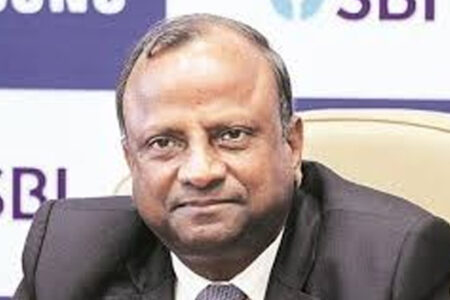The combined net profits of 32 listed private and public sector banks (PSBs) were up 40.56 per cent in FY23 to close to Rs2.29 trillion with both sets of banks crossing the Rs1 trillion mark in posting net profits and a few even recording their highest ever net profits.
While celebrating the phenomenon a few months back, most of us were sceptical about the future of the dream run. We were focussing on the string of challenges ahead.
For instance, with a bulk of the deposits being repriced, the net interest margin (NIM), or the difference between what the banks pay to the depositors and earn on advances, is bound to shrink. A rise in loan rates also could lead to some cracks in the quality of loans given to retail and micro, small and medium enterprises, particularly those that are facing cash flow issues. Also, the pace of recovery — an important contributing factor to the net profits — is likely to taper off.
We were aware that it would not be easy for the banking sector to improve its performance every quarter. Well, that would happen in due course. Meanwhile, the sector has put up yet another stellar show in the first quarter of the current fiscal year.
Barring four banks (Bandhan Bank Ltd, Dhanlaxmi Bank Ltd, City Union Bank Ltd and Punjab & Sind Bank), all listed entities have recorded a rise in their June quarter net profit year-on-year (April-June 2023 over April-June 2022).
Among the large private banks, HDFC Bank Ltd’s net profit has risen close to 30 per cent to Rs11,952 crore while ICICI Bank Ltd has posted almost 40 per cent rise in net profit to Rs9,648 crore; Axis Bank Ltd’s profit is up by more than 40 per cent to Rs5,797 crore; that of Kotak Mahindra Bank Ltd 67 per cent to Rs3,452 crore; IndusInd Bank Ltd 32 per cent to Rs2,124 crore; and IDFC First Bank Ltd 61 per cent to Rs765 crore. (All figures are rounded off.)
In the pack of PSBs, India’s largest lender, State Bank of India (SBI), has seen its quarterly net profit rising 178 per cent to Rs16,884 crore; Bank of Baroda 88 per cent to Rs4,070 crore; Canara Bank 75 per cent to 3,535 crore; Union Bank of India 108 per cent to Rs3,236 crore; Bank of India 176 per cent to Rs1,551 crore; and Punjab National Bank trebled its net profit to Rs1,255 crore.
As a group, private banks’ quarterly net profit in April has risen by 38 per cent to Rs39,200 crore and that of PSBs by a far wider margin — 125 per cent — to Rs34,418 crore. Overall, for the industry, the rise in the June quarter net profit has been 68.5 per cent to Rs73,618 crore.
Barring Bandhan Bank, all banks have posted a rise in their operating profits — ranging from a minuscule 1.5 per cent (Tamilnad Mercantile Bank Ltd) to as high as 173 per cent (UCO Bank). UCO Bank apart, five other PSBs have recorded at least 50 per cent growth in their operating profits with SBI recording 98 per cent growth.
Kotak Mahindra Bank leads the private banks’ group with a 78 per cent operating profit growth while three others (IDFC First Bank, the South Indian Bank Ltd and Axis Bank) have recorded at least 50 per cent growth.
However, overall, the industry operating profit growth is lower than that of the growth in net profits — 42.7 per cent versus 68.5 per cent.
In essence, the operating profit has not grown in sync with the net profit. The main contributing factor to the higher net profits is a sharp drop in provision, particularly for the PSBs. Barring four — UCO Bank, Bank of Maharashtra, Indian Overseas Bank and Bank of Baroda — other PSBs, including SBI, have provided less in this quarter. The comparative figure for private banks is seven. Overall, provision done by the private banks has risen by 9.5 per cent but, for the entire industry, it has dropped by over 11 per cent as the PSBs’ provision has shrunk by 20 per cent.
Most of them could afford to set aside less money for bad loans as their non-performing assets (NPAs) have been continuing to decline. All PSBs have shown a drop in their gross NPAs both year-on-year as well as quarter-on-quarter (June quarter over March quarter). That’s not the case with all private banks. City Union Bank has shown a rise in gross NPAs both year-on-year and quarter-on-quarter while Bandhan Bank, Catholic Syrian Bank Ltd, HDFC Bank and Federal Bank have posted a rise in gross NPAs quarter-on-quarter.
Post-provisioning, net NPAs of all PSBs are down year-on-year but for SBI and Punjab & Sind Bank, they have been marginally up quarter-on-quarter. Despite that, SBI as well as Indian Bank and Bank of Baroda have less than 1 per cent net NPAs.
Among private banks, the list of banks that have less than 1 per cent net NPAs include Axis Bank, Catholic Syrian Bank, HDFC Bank, IDFC First Bank, Kotak Mahindra Bank, Tamilnad Mercantile Bank, IDBI Bank and the Federal Bank while Yes Bank Ltd and RBL Bank Ltd have just 1 per cent net NPA each.
Barring Bandhan Bank and Tamilnad Mercantile Bank, every listed bank’s net interest income (NII) has risen during the quarter. Boosted by loan growth, a few of them have shown handsome rise in their NII. For instance, IDBI Bank’s NII has grown 61 per cent and that of ICICI Bank, IDFC First Bank, Kotak Mahindra Bank and the South Indian Bank by over 30 per cent. Among the PSBs, Central Bank of India has shown the maximum NII growth of 48 per cent, followed by Bank of India 45 per cent. The industry’s NII growth has been a healthy 26 per cent — almost identical for both private banks as well the PSBs.
Let’s focus on the most important aspect of banks’ June quarter earnings. Barring very few, most banks have shown a drop in the low-cost current account and savings account (CASA) kitty, both year-on-year as well as quarter-on-quarter. Ditto their NIM.
In cricketing parlance, the pitch on which the banks are batting is changing. The sky is not yet cloudy but the ball will swing now. As savers are shifting to fixed deposits, CASA is slipping. And, since the banks have to pay more to attract deposits, their NIMs are compressing. As more and more deposits get priced, the margin will come under pressure.
For the time being, the credit quality is holding up but a few banks have started reporting fresh slippages. We need to wait and watch. The good run will continue probably in the current fiscal year, too, before the cycle changes and credit cost eats into banks’ profits. The market also seems to be sniffing it. The Nifty Bank has fallen close to 5 per cent since its peak in the last week of July, from 46310 to below 44000 level now.
This column first appeared in Business Standard
The columnist is a Consulting Editor with Business Standard and Senior Adviser to Jana Small Finance Bank.
His latest book: Roller Coaster: An Affair With Banking
Twitter: TamalBandyo
Website: https://bankerstrust.in



